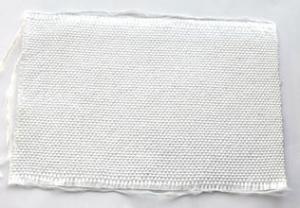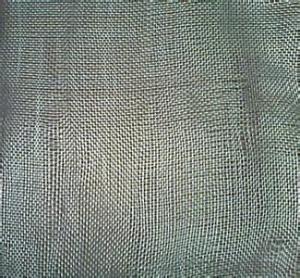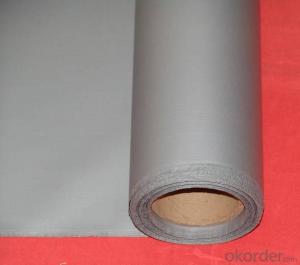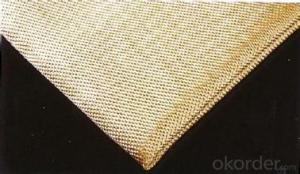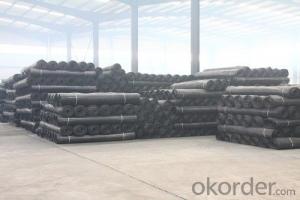High Silica Fiber Cloth silica84
- Loading Port:
- China Main Port
- Payment Terms:
- TT OR LC
- Min Order Qty:
- -
- Supply Capability:
- -
OKorder Service Pledge
Quality Product, Order Online Tracking, Timely Delivery
OKorder Financial Service
Credit Rating, Credit Services, Credit Purchasing
You Might Also Like
Quick Details
| Place of Origin: | Brand Name: | Model Number: | |||
| Weight: | Width: | Weave Type: | |||
| Yarn Type: | Alkali Content: | Standing Temperature: | |||
| applications: |
Packaging & Delivery
| Packaging Detail: | rolls packed in cartons loaded on pallets |
| Delivery Detail: | within 15 days after order confirmation |
Specifications
1.withstand temperature up to 1000 degree
2.weight:about 600g/m2
3.applications:heavy duty welding protection;
- Q:Can fiberglass fabric be used for reinforcement in wind turbine blades?
- Fiberglass fabric is a viable option for reinforcing wind turbine blades. It is a commonly utilized material in wind turbine blade construction because it possesses a high strength-to-weight ratio, durability, and resistance to corrosion. The fabric is typically composed of layers of woven or non-woven fiberglass fibers that are saturated with resin to create a composite material. This composite is then employed to fortify the structure of the wind turbine blades, granting them the necessary strength and rigidity to endure the dynamic loads and stresses encountered during operation. In addition, fiberglass fabric can be easily shaped into intricate forms, making it suitable for meeting the aerodynamic design prerequisites of wind turbine blades. All in all, fiberglass fabric is a favored option for reinforcing wind turbine blades due to its mechanical properties and manufacturing adaptability.
- Q:Can fiberglass fabric be used for reinforcement in septic tanks?
- Yes, fiberglass fabric can be used for reinforcement in septic tanks. Fiberglass fabric is known for its strength and durability, making it an excellent choice for reinforcing structures, including septic tanks. The fabric can be used to reinforce the walls and base of the tank, providing additional strength and preventing cracks or leaks. Additionally, fiberglass fabric is resistant to corrosion, which is important in a septic tank environment where there can be high levels of sewage and chemicals. Overall, using fiberglass fabric for reinforcement in septic tanks can enhance their longevity and structural integrity.
- Q:Is fiberglass fabric resistant to punctures?
- Fiberglass fabric exhibits puncture resistance, showcasing its durability and strength. This material is renowned for its ability to withstand punctures and tears, making it a preferred choice in various fields. For instance, it finds extensive usage in protective clothing, automotive components, and insulation materials, where puncture resistance is crucial. The woven structure of fiberglass fabric adds an extra layer of robustness, effectively preventing punctures. However, it is worth noting that despite its high resistance, fiberglass fabric is not entirely impervious to punctures. Depending on the object's force and sharpness, it is still possible to puncture fiberglass fabric, albeit less likely when compared to alternative materials.
- Q:How is fiberglass fabric used in the production of protective clothing?
- Fiberglass fabric is commonly used in the production of protective clothing due to its high strength and heat resistance properties. It is often used as a reinforcement material in protective suits, gloves, and aprons, providing added durability and protection against heat, flame, and chemical hazards. The fabric's ability to resist tearing and its lightweight nature make it an ideal choice for manufacturing protective clothing that offers both comfort and safety to the wearer.
- Q:How is fiberglass fabric coated?
- Fiberglass fabric is coated using various methods, depending on the desired end use and specific requirements. One common method is called resin coating, where a liquid resin is applied to the fabric. The resin can be either epoxy or polyester based, and it is typically mixed with a catalyst to initiate the curing process. The fabric is then saturated with the resin and excess resin is removed to ensure an even coating. Another method is called silicone coating, where a layer of liquid silicone is applied to the fabric. Silicone coatings provide excellent heat resistance and flexibility, making them suitable for applications such as insulation or protective covers. In some cases, fiberglass fabric may be coated with other materials such as polyurethane or PTFE (polytetrafluoroethylene), commonly known as Teflon. Polyurethane coatings provide enhanced abrasion resistance and flexibility, while PTFE coatings offer excellent non-stick properties and high temperature resistance. The coating process can be carried out using various techniques, including dip coating, spray coating, or roller coating. Dip coating involves immersing the fabric into a tank filled with the coating material, while spray coating utilizes a spray gun to evenly distribute the coating onto the fabric surface. Roller coating involves passing the fabric through a set of rollers that apply the coating in a controlled manner. Overall, the coating process is crucial in enhancing the performance and durability of fiberglass fabric, allowing it to be used in a wide range of industries such as aerospace, automotive, construction, and marine.
- Q:How is fiberglass fabric used in the production of automotive body parts?
- Automotive body parts often incorporate fiberglass fabric due to its numerous advantageous properties. This material is both lightweight and strong, making it ideal for producing durable and efficient components. Car hoods, in particular, frequently utilize fiberglass fabric during manufacturing. Enthusiasts favor fiberglass hoods because they are significantly lighter than traditional metal hoods, reducing the overall weight of the vehicle. This weight reduction can lead to improved fuel efficiency and enhanced performance. Fiberglass fabric is also commonly employed in the production of fenders, spoilers, and other exterior body panels. These components must be lightweight yet sturdy enough to withstand road debris, impacts, and weather conditions. Fiberglass fabric provides the necessary strength and durability while also allowing for intricate design shapes and contours. Moreover, fiberglass fabric is used to fabricate interior automotive parts. It is frequently utilized in creating door panels, dashboard covers, and trim pieces. These components require a material that is both flexible and durable, and fiberglass fabric perfectly fits this criterion. It can be easily molded into various shapes and sizes, allowing for customization and achieving a sleek, modern aesthetic. During the manufacturing process, fiberglass fabric is typically combined with a resin matrix, such as polyester or epoxy, to create a composite material. The fabric is first impregnated with the resin, and then molded or pressed into the desired shape using heat and pressure. This process ensures the fiberglass fabric adheres well to the resin, resulting in a strong and rigid final product. In conclusion, fiberglass fabric plays a vital role in the production of automotive body parts. Its lightweight nature, strength, durability, and versatility make it an excellent choice for creating various exterior and interior components. By utilizing fiberglass fabric, automakers can achieve both performance enhancements and aesthetic appeal in their vehicles.
- Q:What are the safety precautions to be taken while working with fiberglass fabric?
- When working with fiberglass fabric, it is important to take certain safety precautions to protect yourself. Some key measures include wearing protective clothing such as long sleeves, gloves, and safety goggles to prevent direct contact with the skin and eyes. It is also essential to work in a well-ventilated area or use a respirator to avoid inhaling the fiberglass particles, which can cause respiratory irritation. Additionally, using tools with appropriate dust collection systems and cleaning up any loose fiberglass promptly can help minimize the risk of exposure.
- Q:Can fiberglass fabric be used for banners and signs?
- Certainly! Banners and signs can indeed make use of fiberglass fabric. This versatile material provides numerous advantages in this regard. Its durability, lightweight nature, and resistance to various weather conditions render it fitting for both indoor and outdoor purposes. Furthermore, fiberglass fabric boasts a sleek surface that allows for top-notch printing and vivid colors. It also proves effortless to maneuver and can be readily mounted or hung. Ultimately, employing fiberglass fabric for banners and signs guarantees prolonged lifespan and aesthetic allure, explaining why countless businesses and organizations favor it.
- Q:Can fiberglass fabric be used in wet or humid environments?
- Yes, fiberglass fabric can be used in wet or humid environments. Fiberglass is a highly versatile material that is known for its resistance to moisture and humidity. It does not absorb water and is not affected by mold or mildew. This makes it an excellent choice for applications such as boat building, outdoor furniture, and insulation in areas with high moisture levels. Additionally, fiberglass fabric is also resistant to corrosion, making it suitable for use in marine environments or areas with high salt content. Overall, fiberglass fabric is a durable and reliable option for use in wet or humid environments.
- Q:What's the difference between glass fiber tape and fiberglass tape?
- Glass fiber belt is the base material, glass fiber cloth, without glue. Fiberglass is glass fiber. Glass fiber tape is called fiberglass cloth tape, a glass fiber tape, with aluminum film outside
1. Manufacturer Overview |
|
|---|---|
| Location | |
| Year Established | |
| Annual Output Value | |
| Main Markets | |
| Company Certifications | |
2. Manufacturer Certificates |
|
|---|---|
| a) Certification Name | |
| Range | |
| Reference | |
| Validity Period | |
3. Manufacturer Capability |
|
|---|---|
| a)Trade Capacity | |
| Nearest Port | |
| Export Percentage | |
| No.of Employees in Trade Department | |
| Language Spoken: | |
| b)Factory Information | |
| Factory Size: | |
| No. of Production Lines | |
| Contract Manufacturing | |
| Product Price Range | |
Send your message to us
High Silica Fiber Cloth silica84
- Loading Port:
- China Main Port
- Payment Terms:
- TT OR LC
- Min Order Qty:
- -
- Supply Capability:
- -
OKorder Service Pledge
Quality Product, Order Online Tracking, Timely Delivery
OKorder Financial Service
Credit Rating, Credit Services, Credit Purchasing
Similar products
New products
Hot products
Hot Searches
Related keywords
